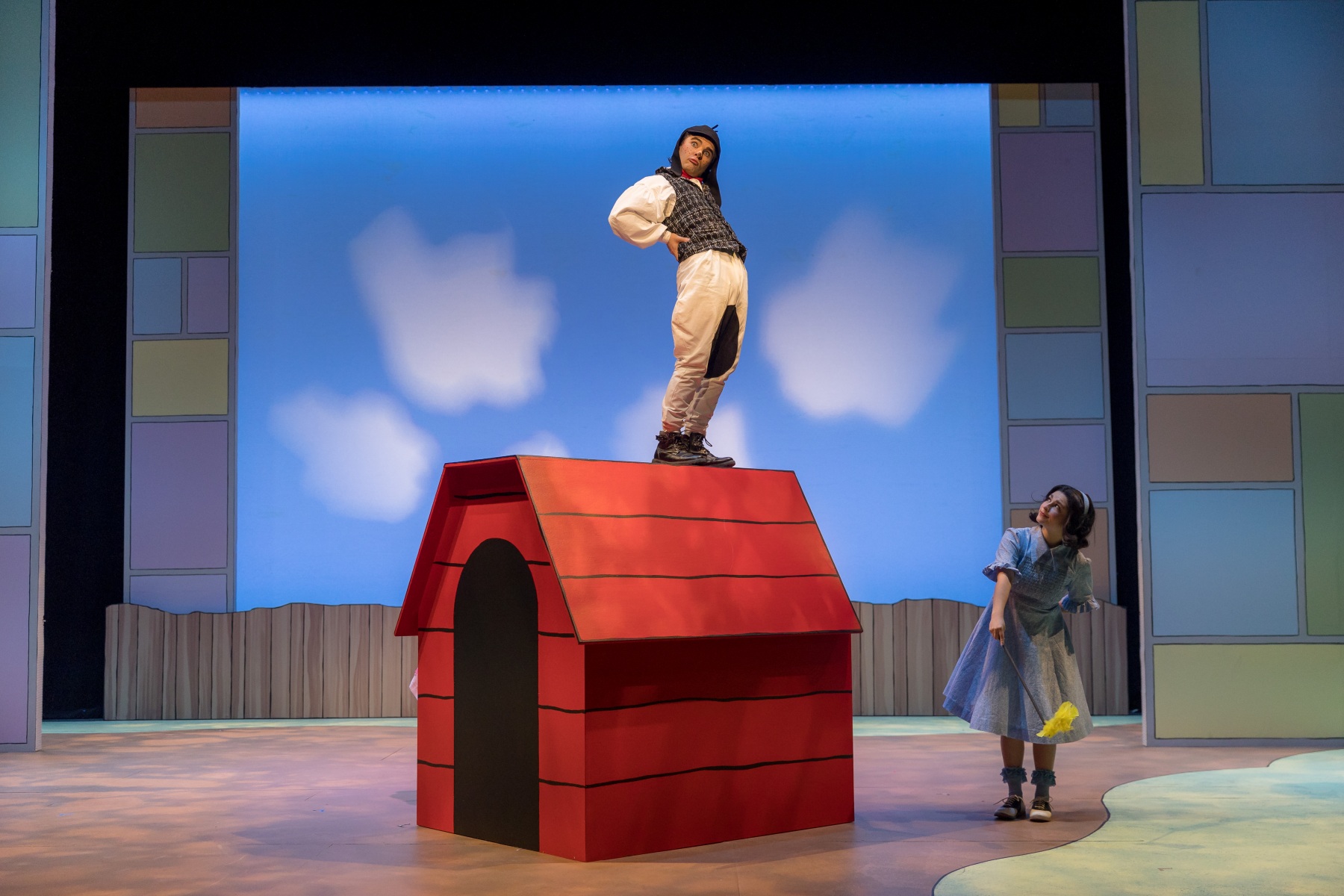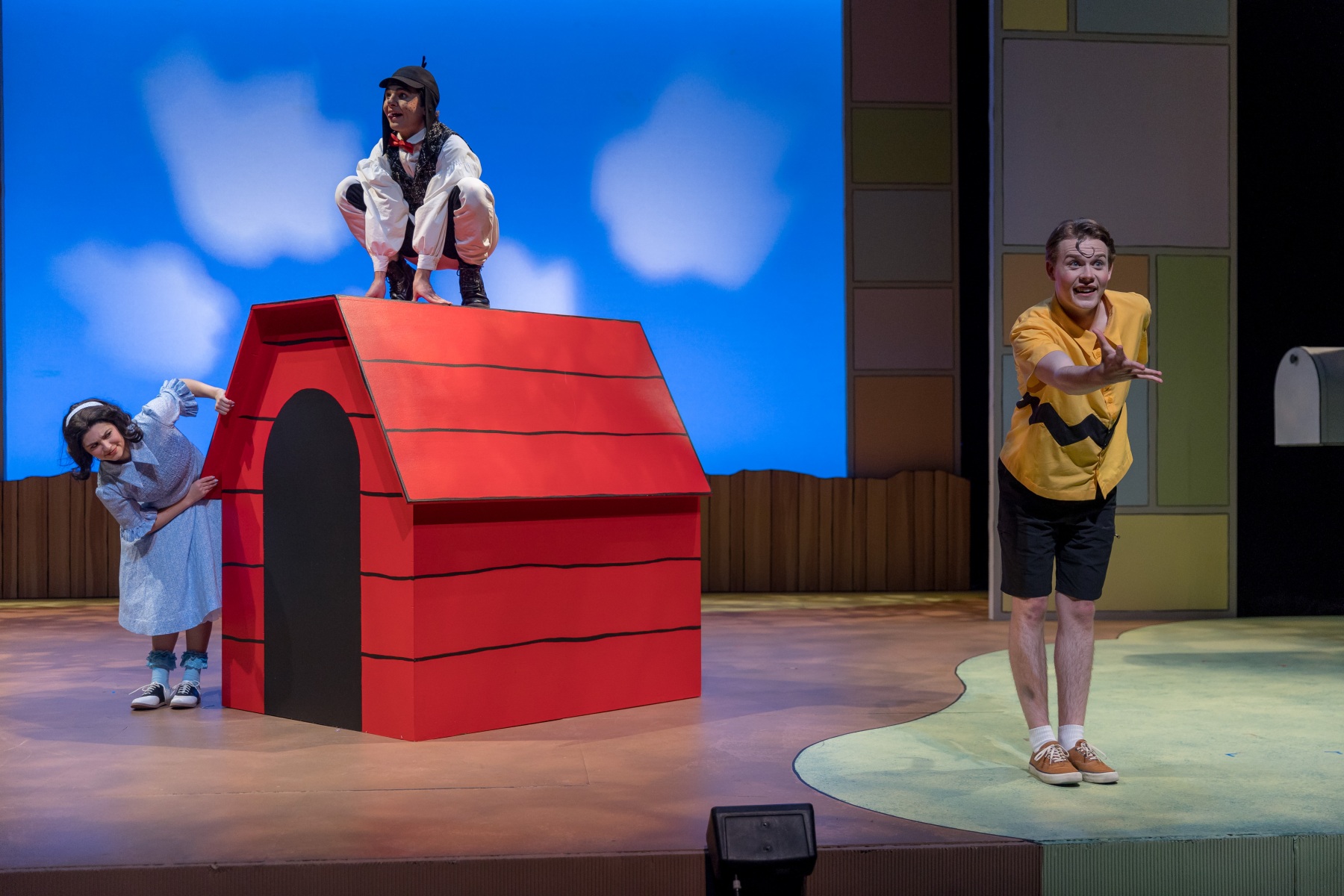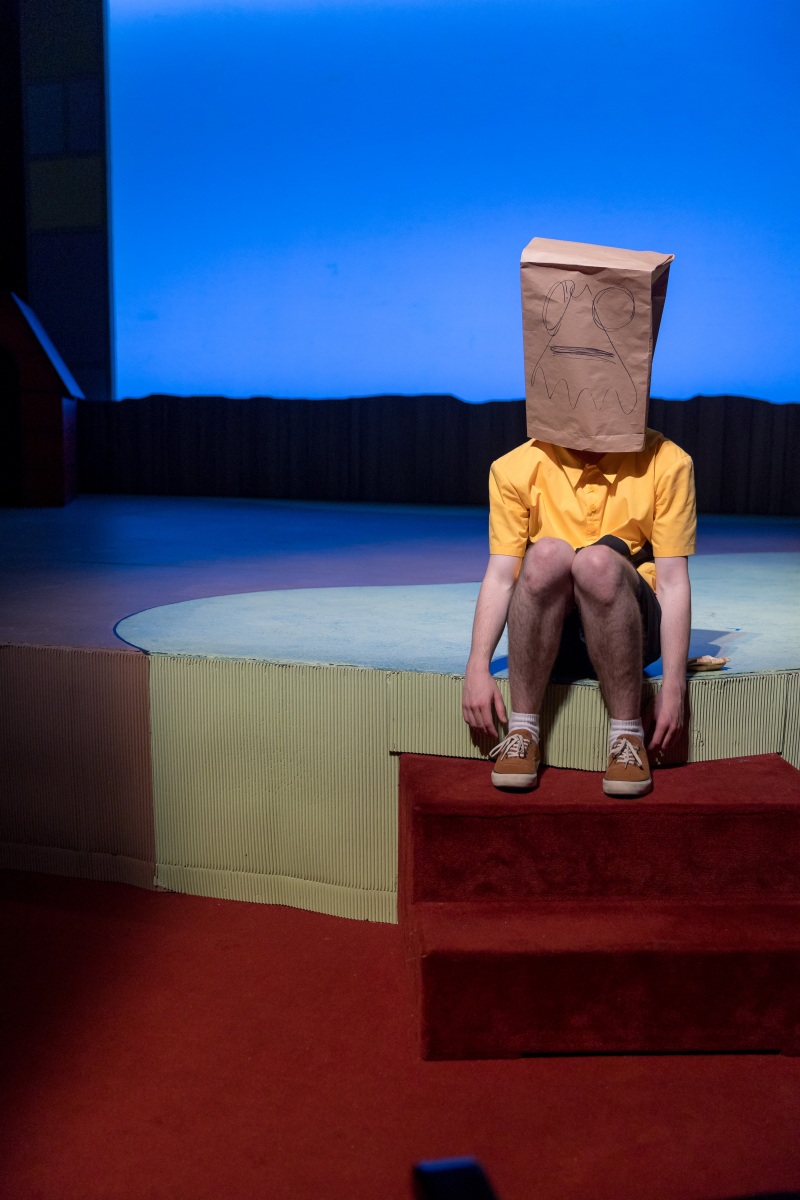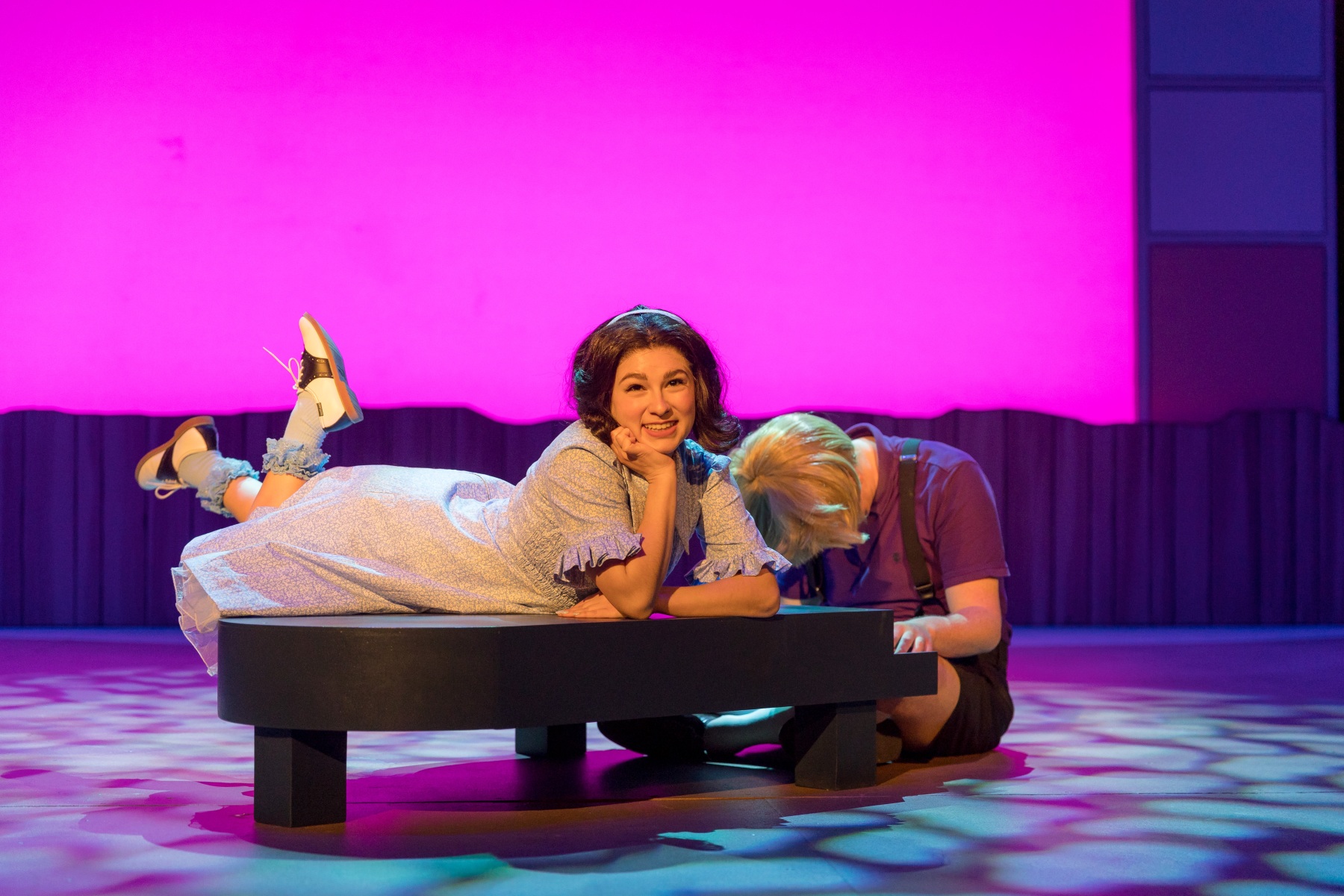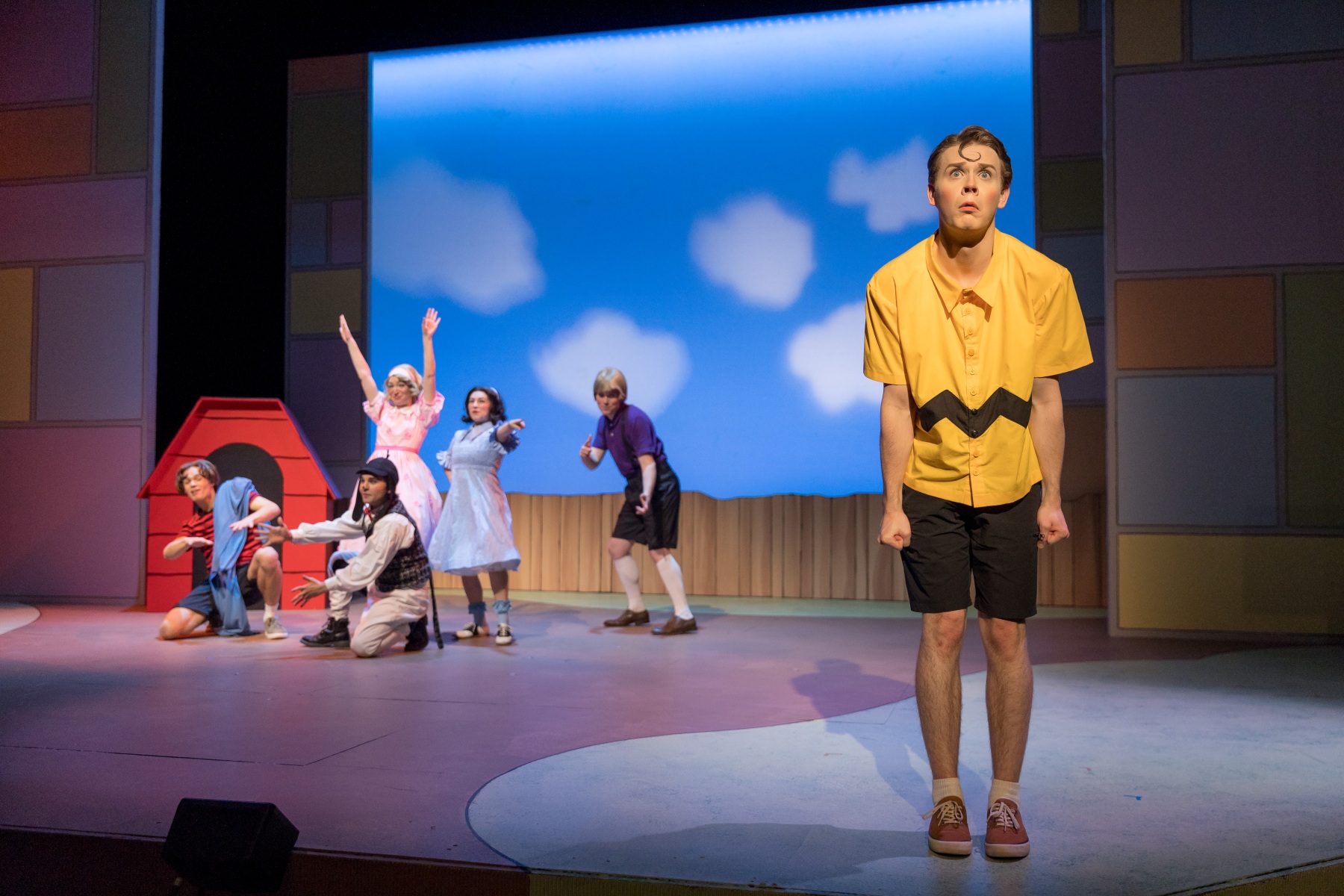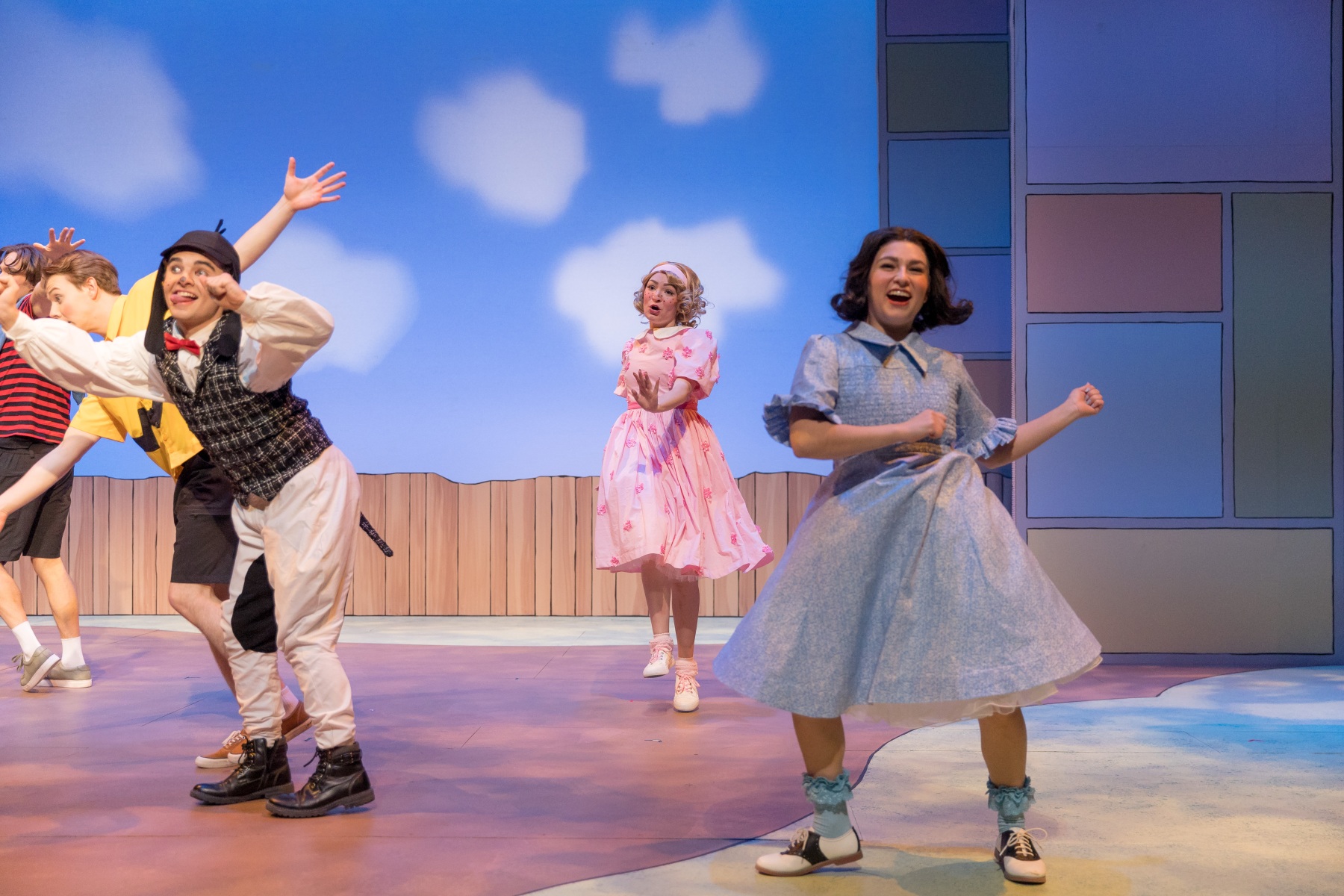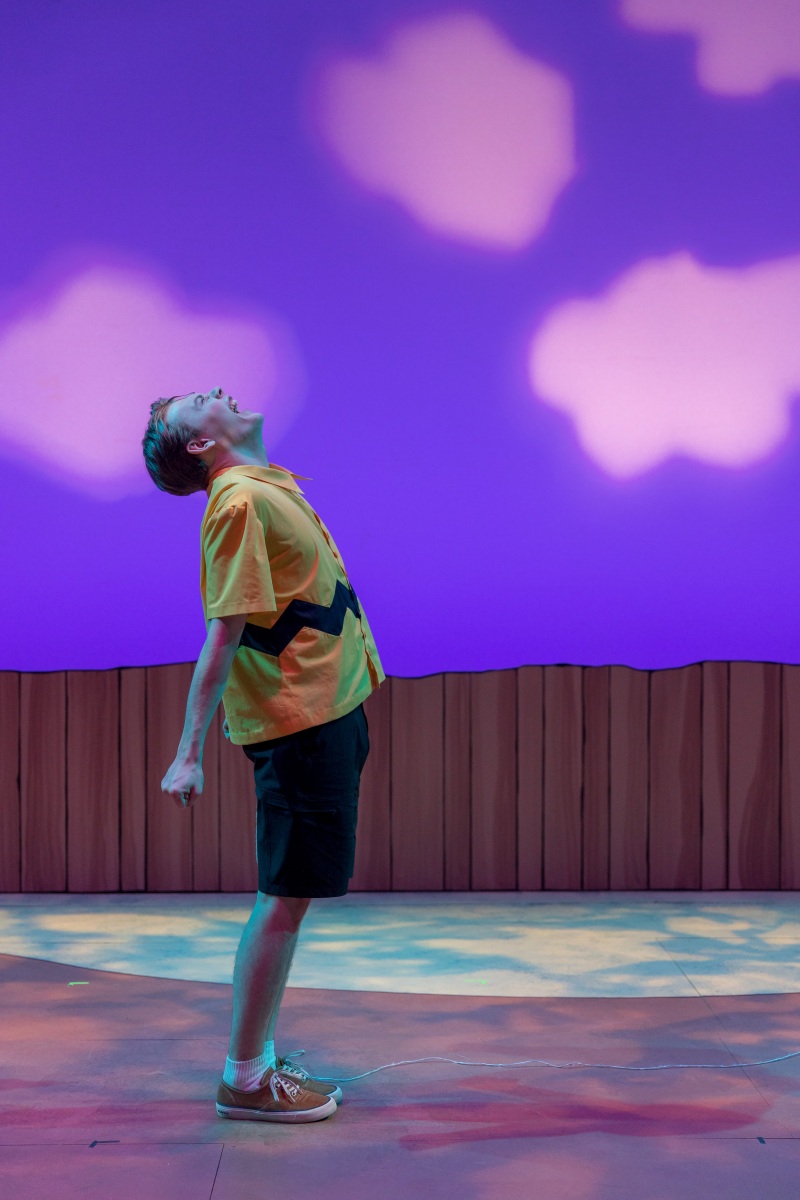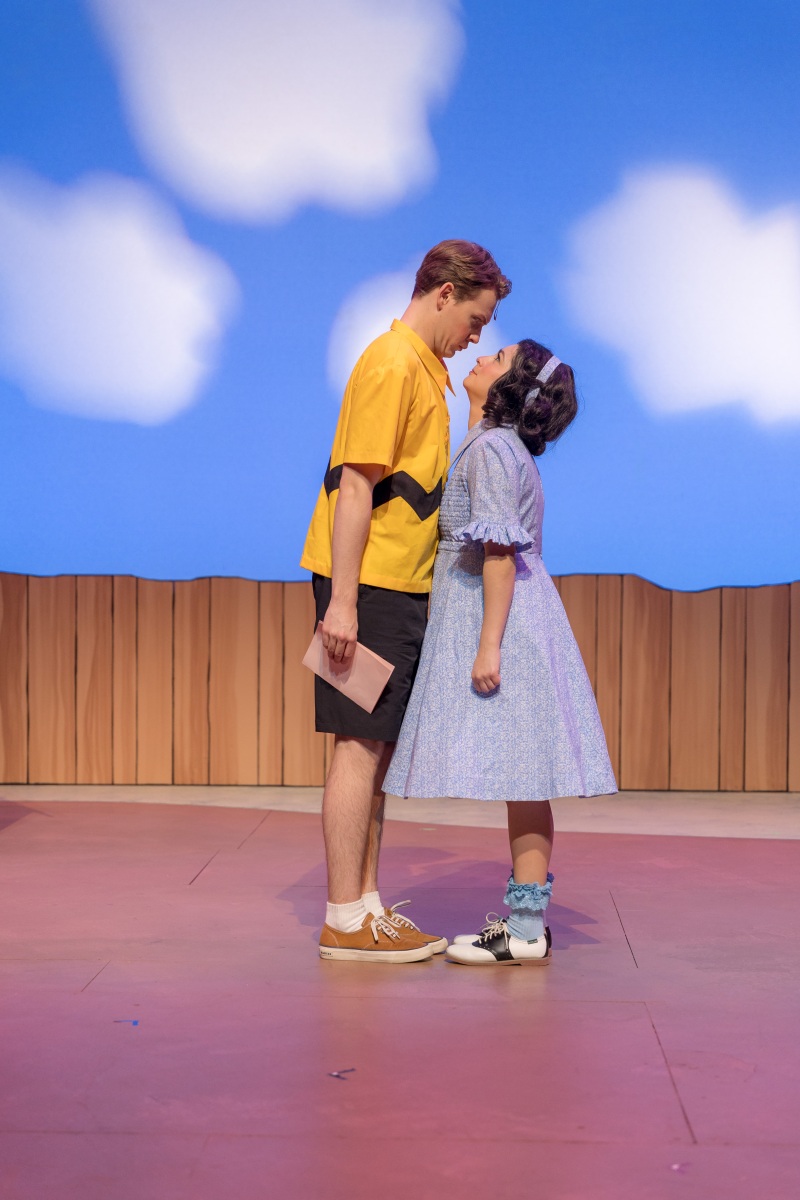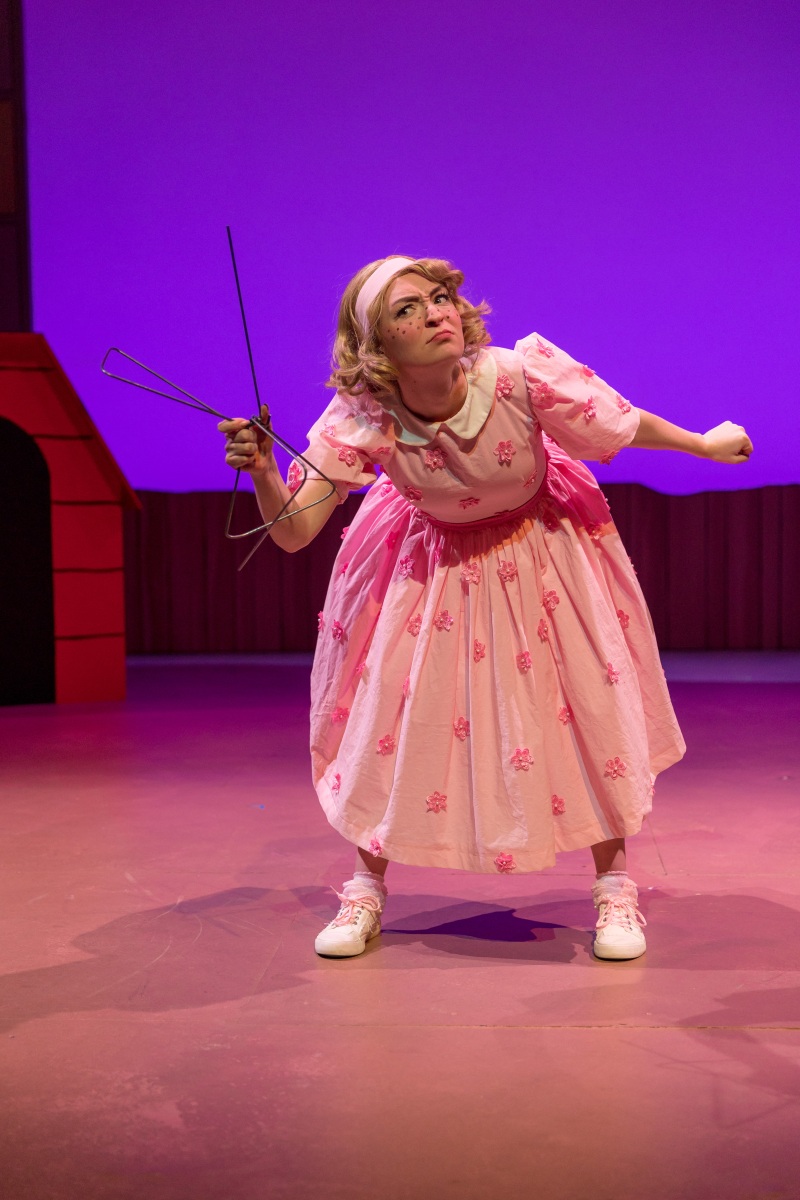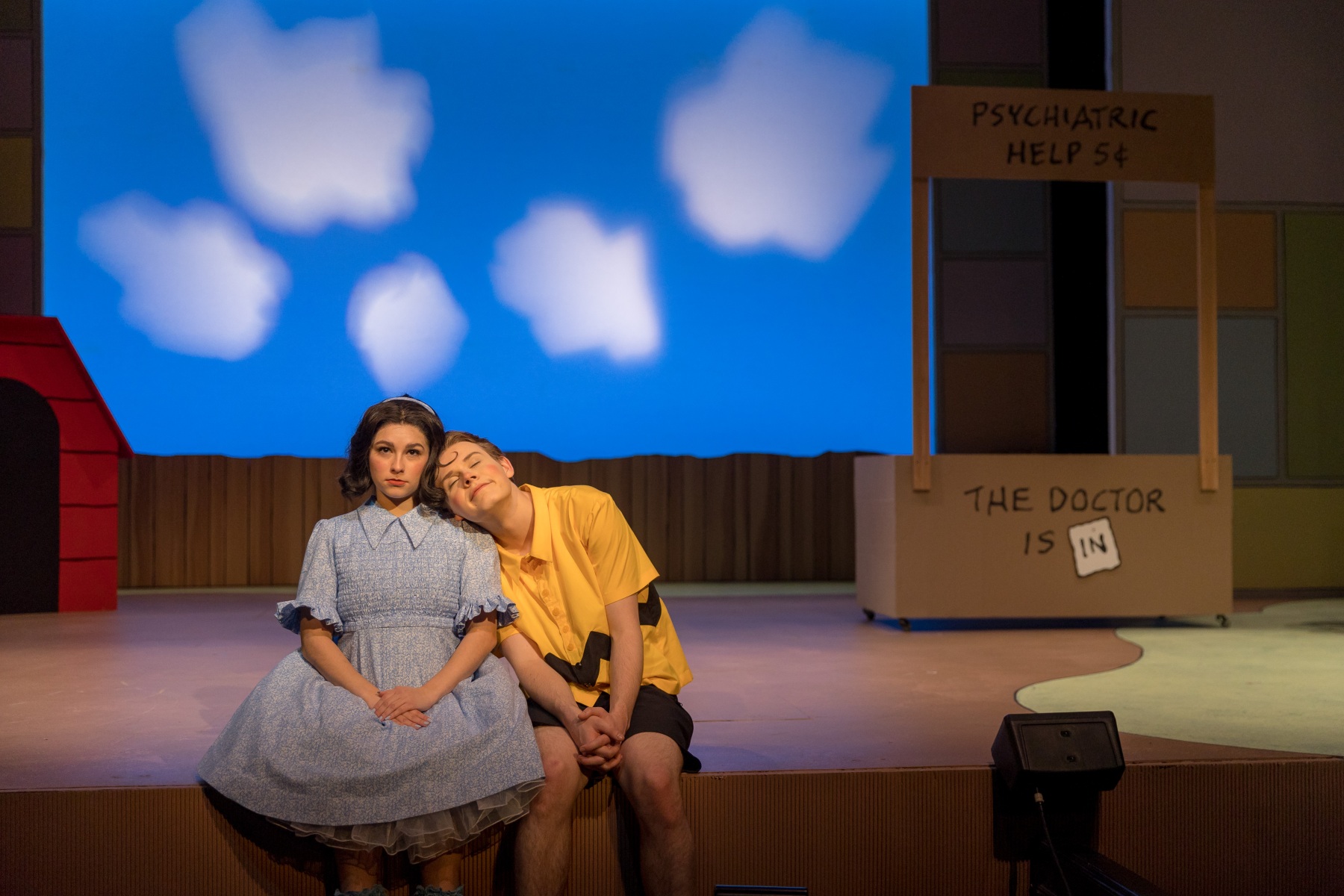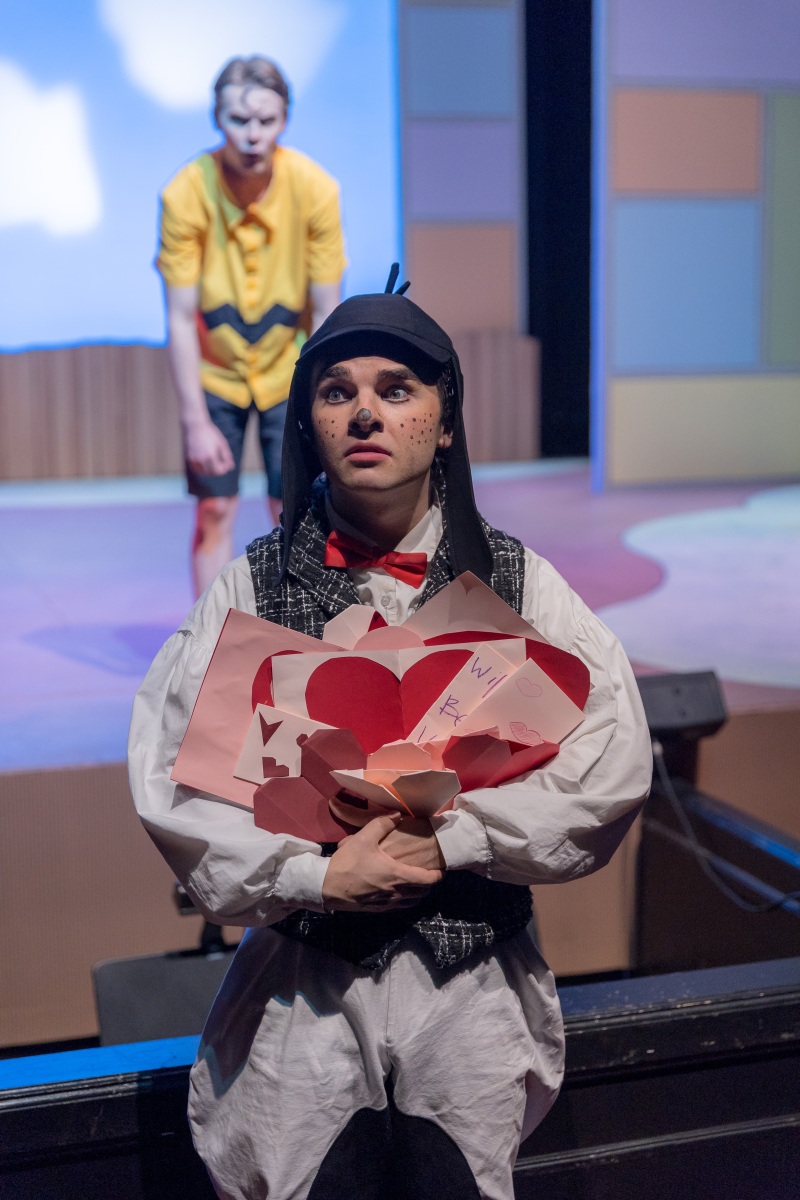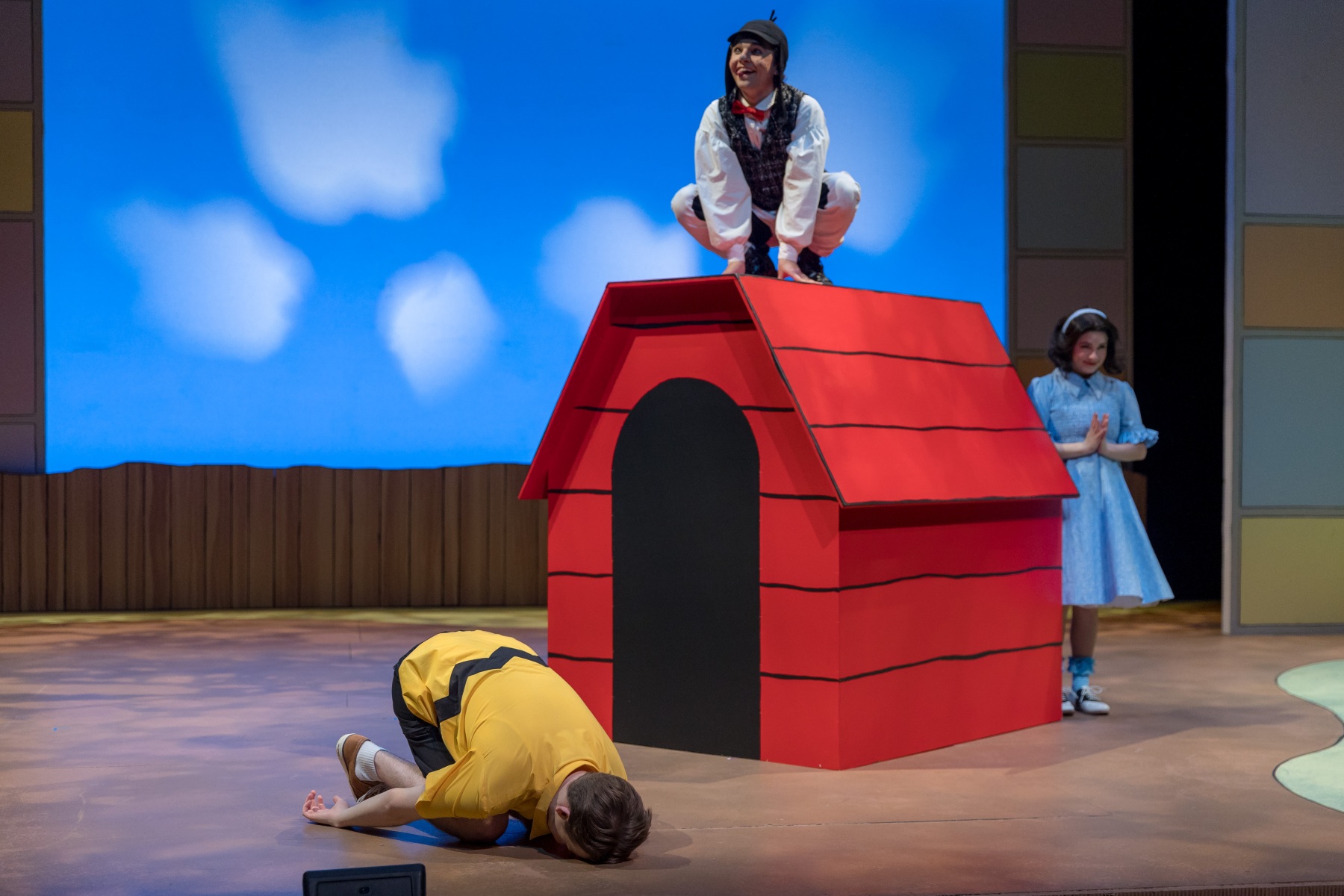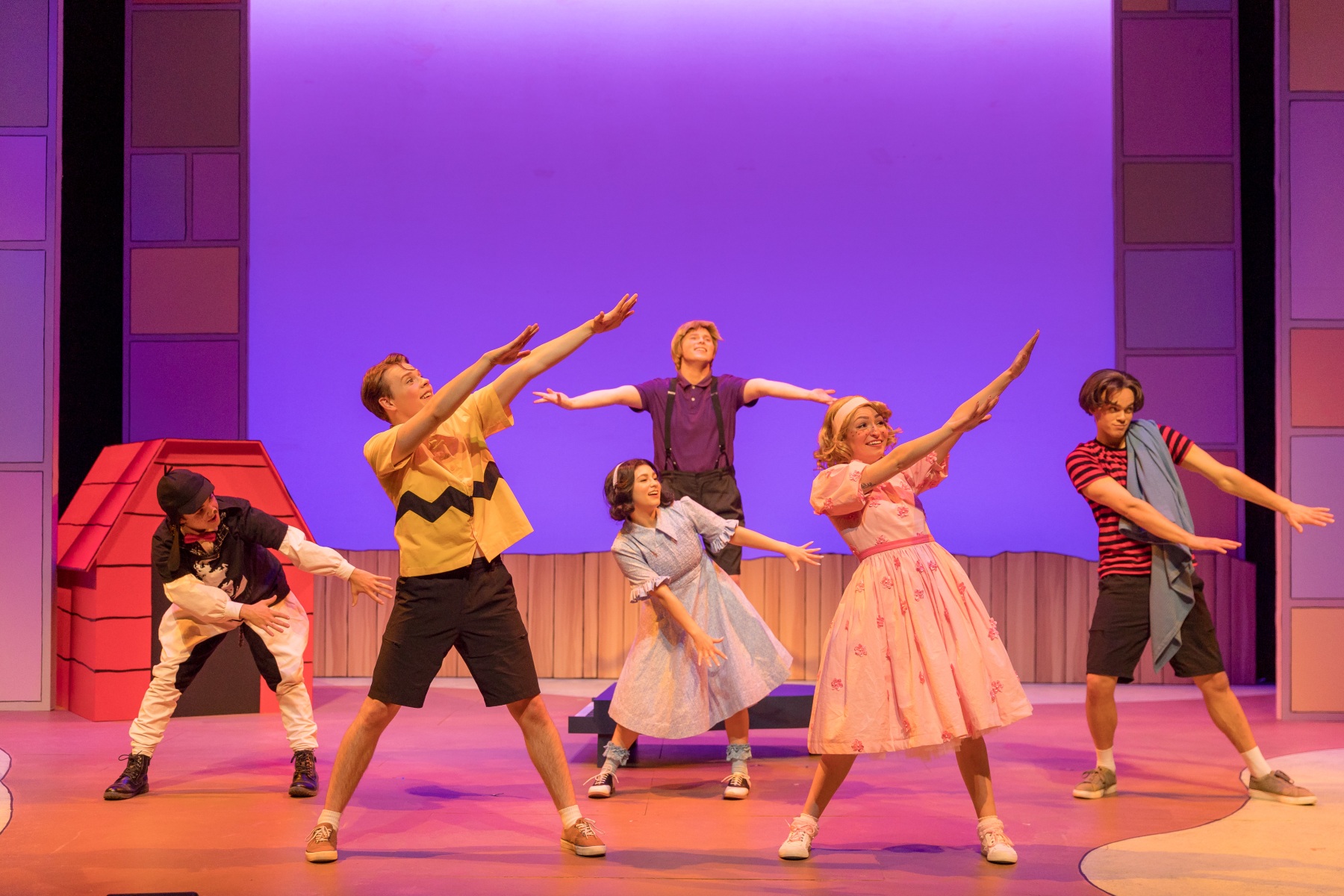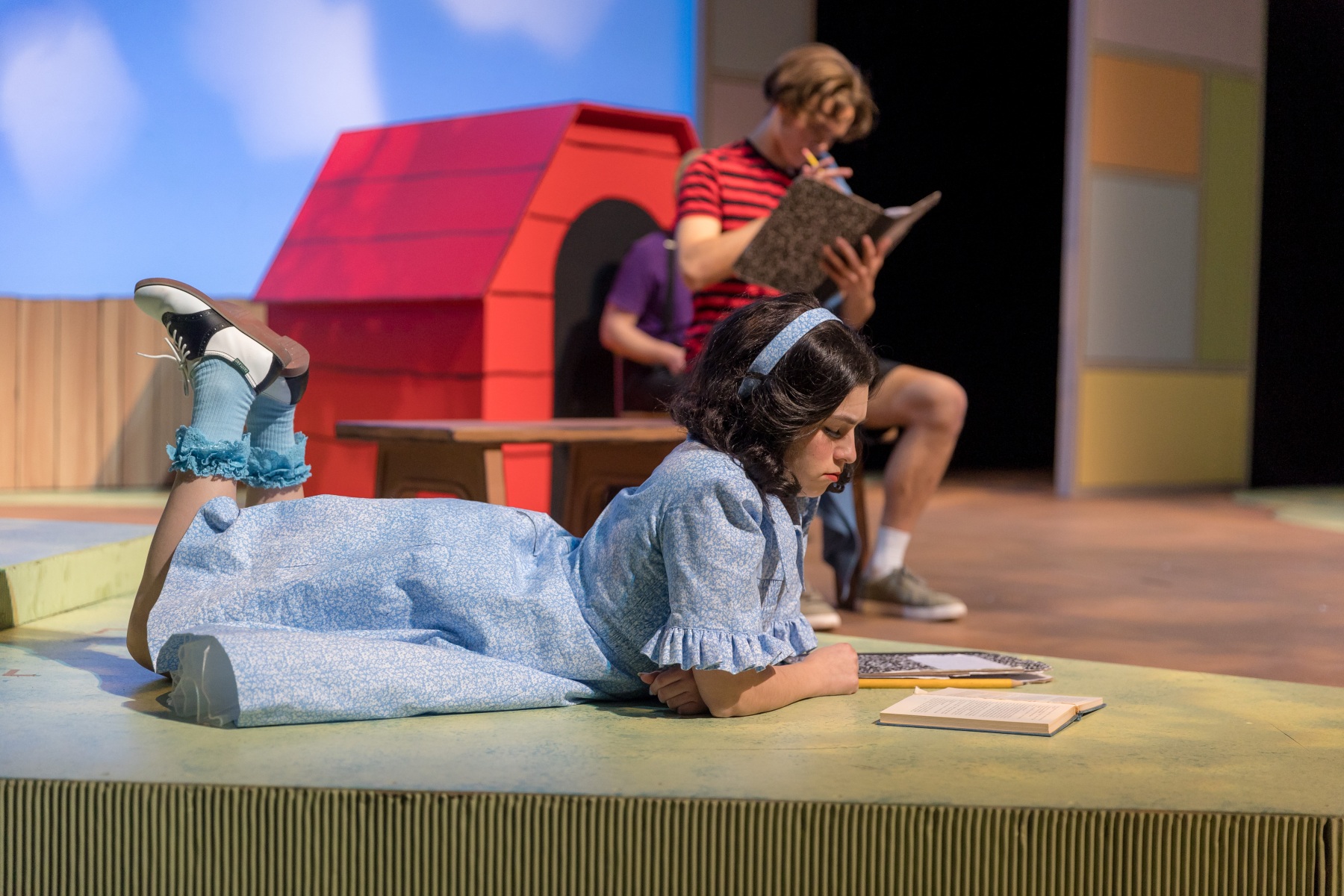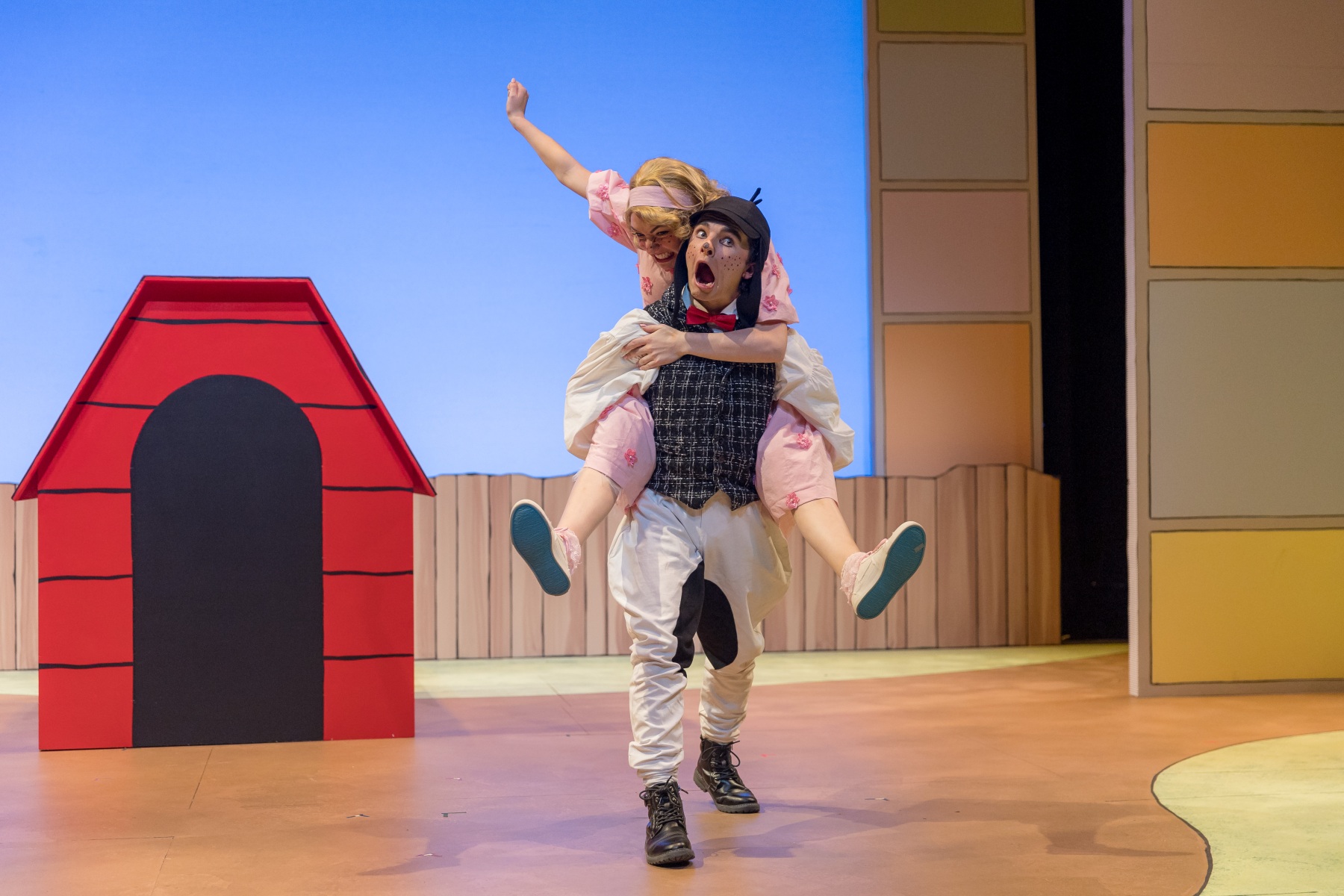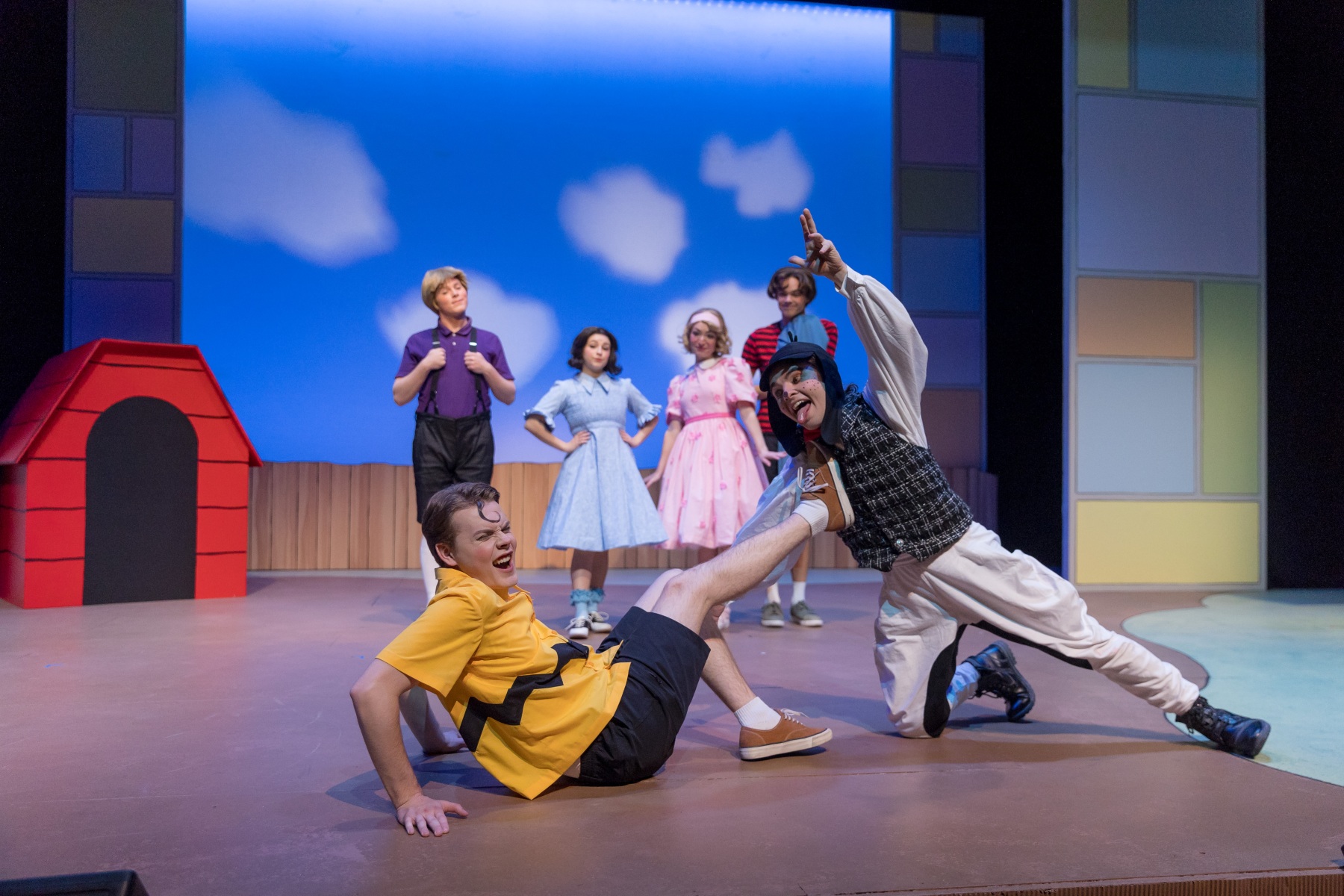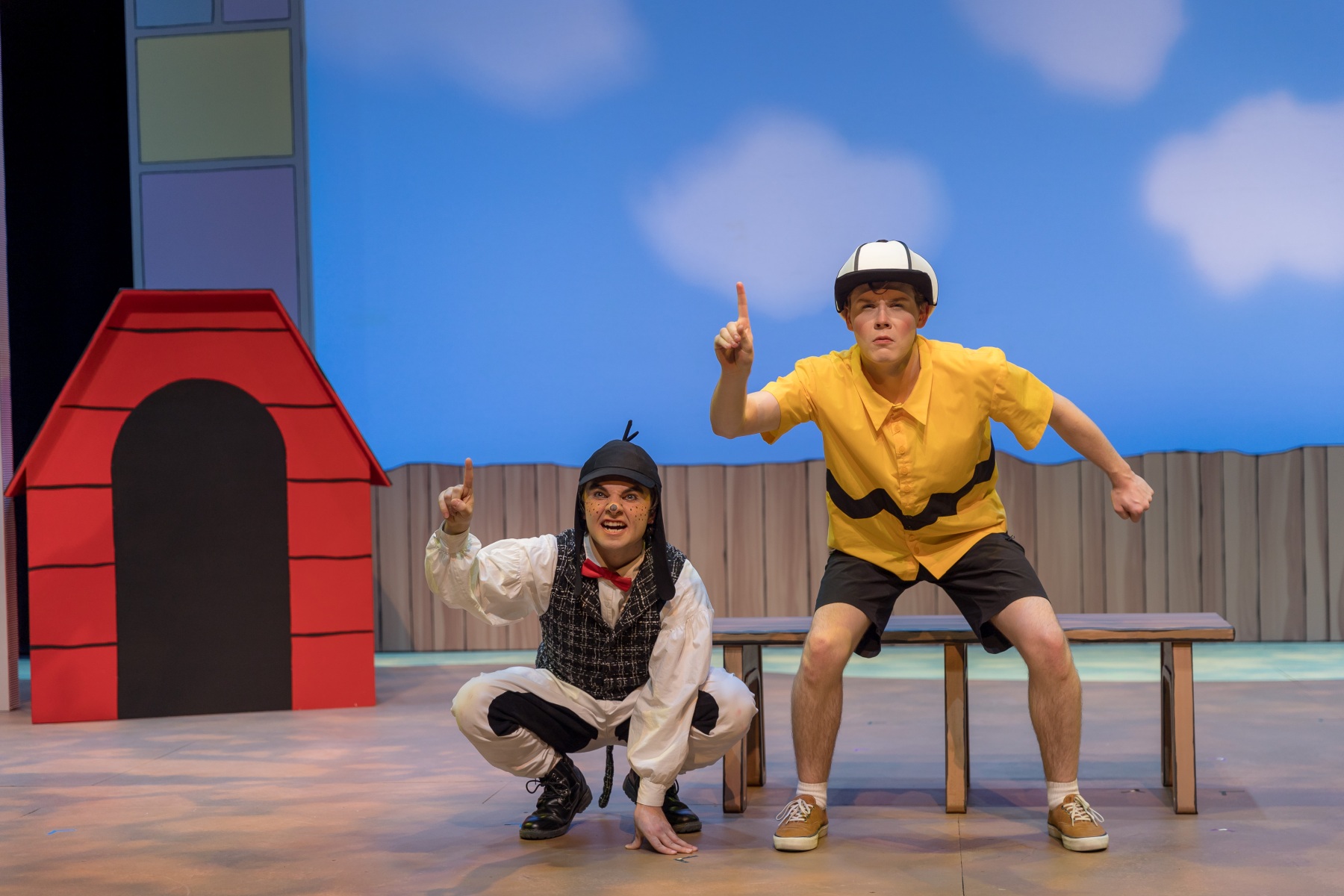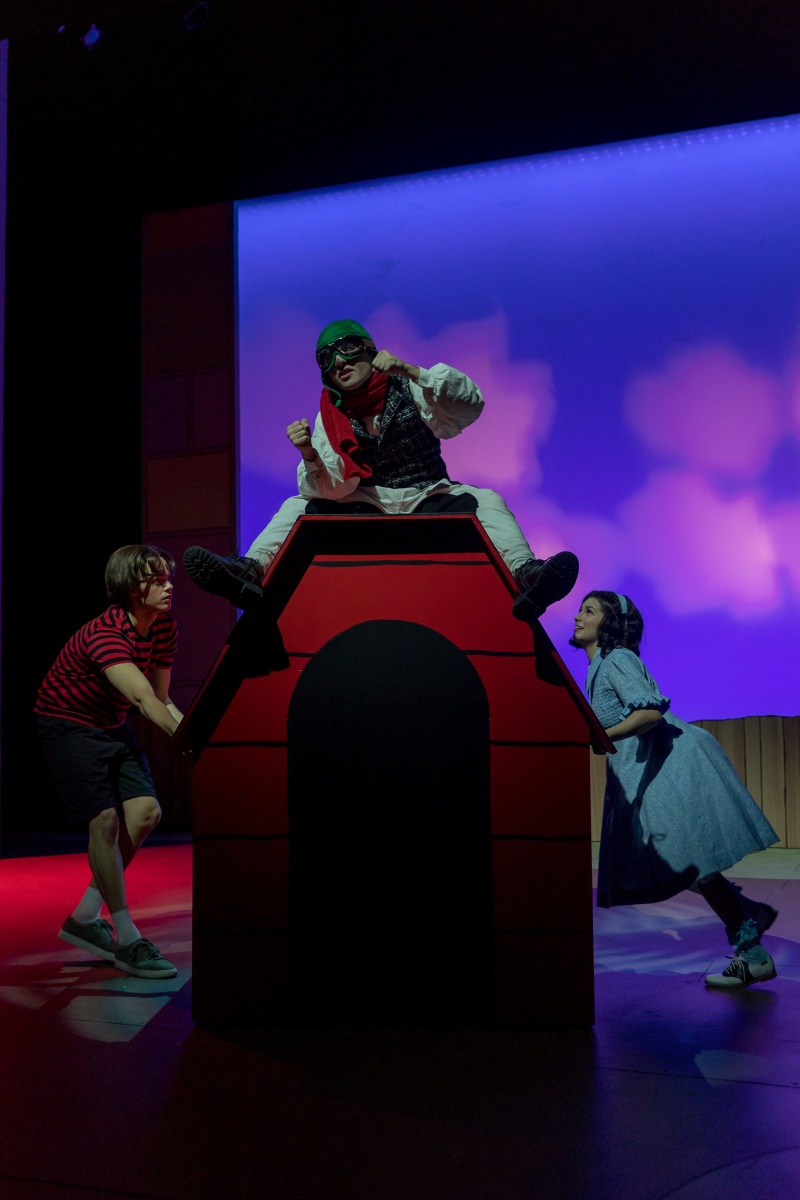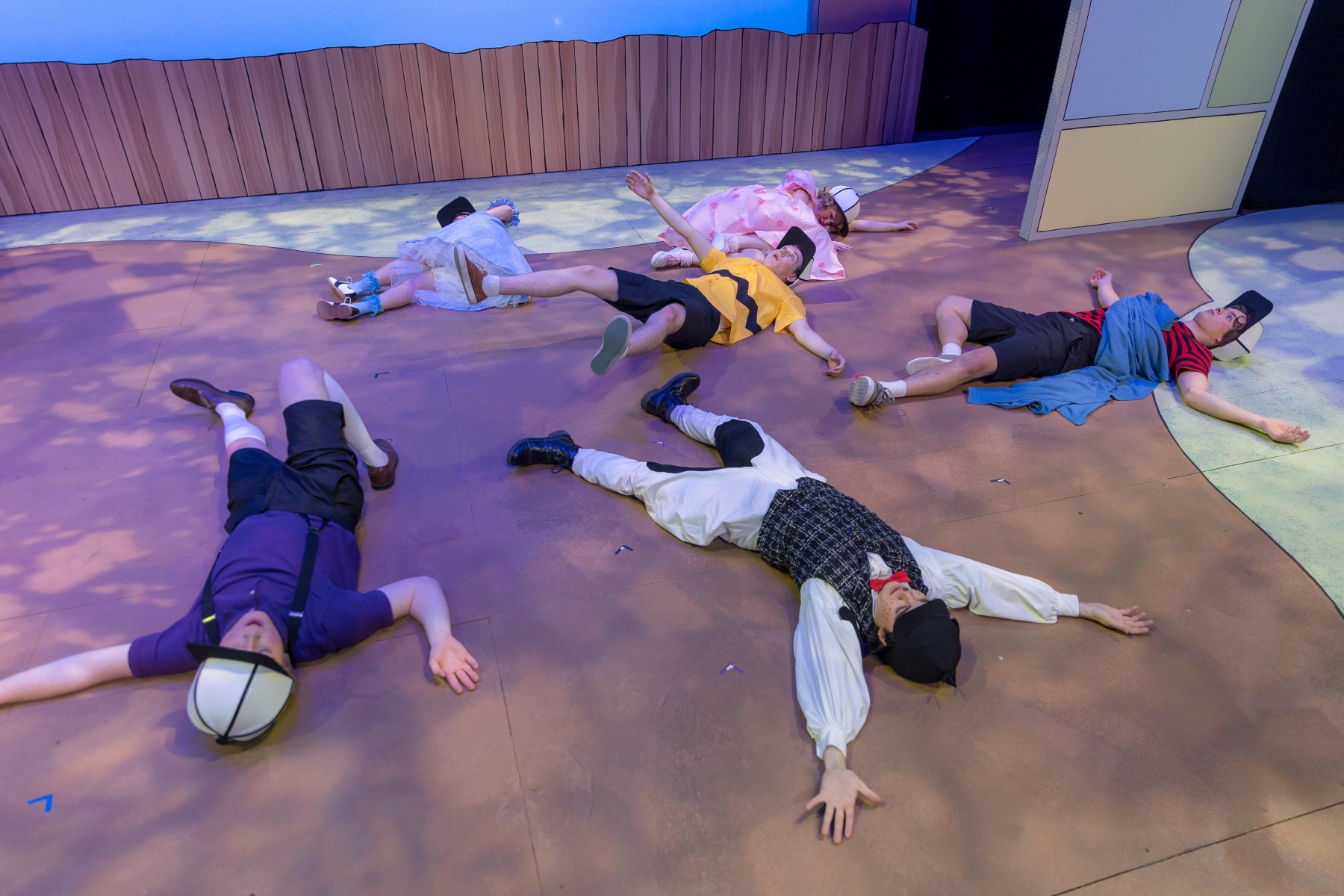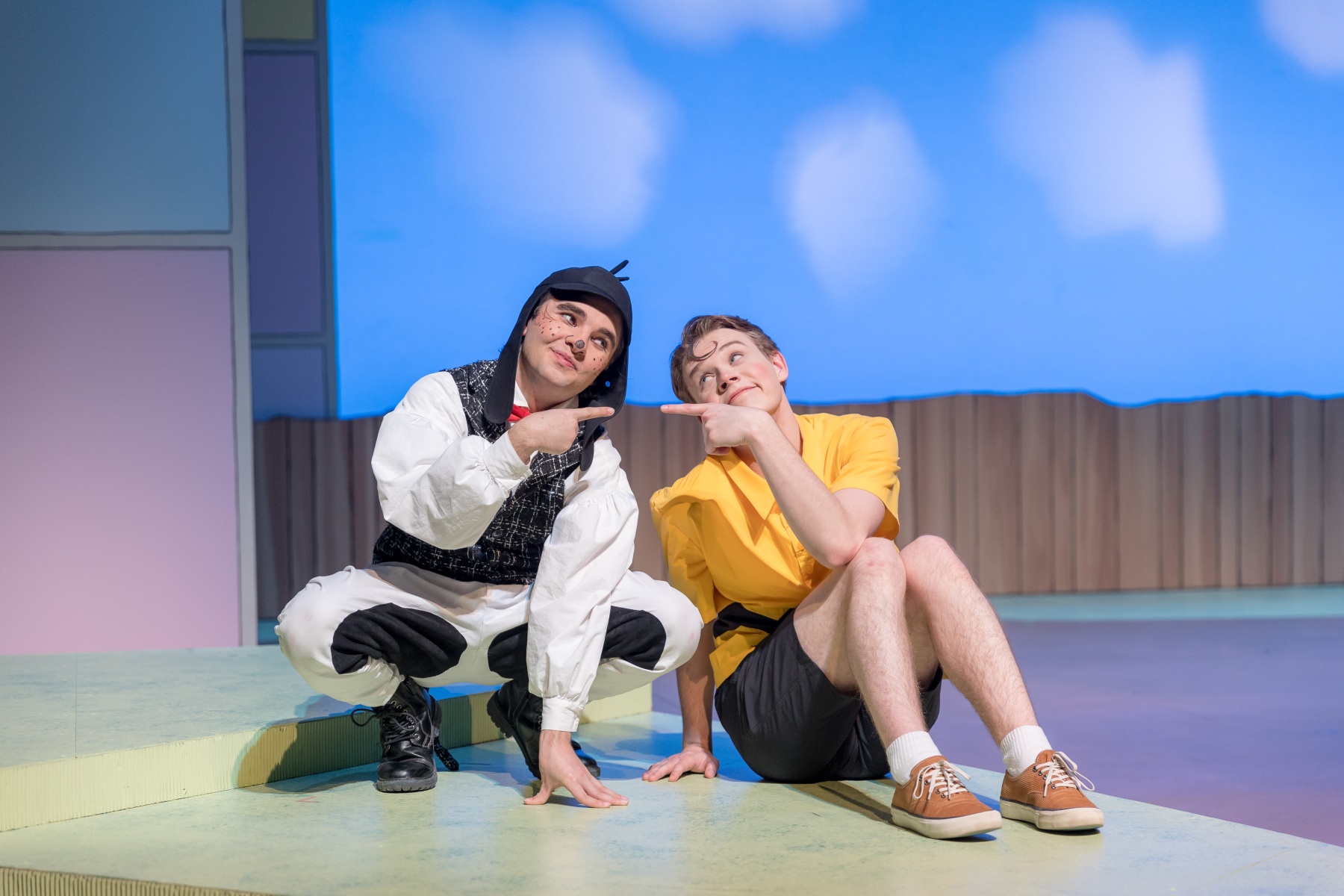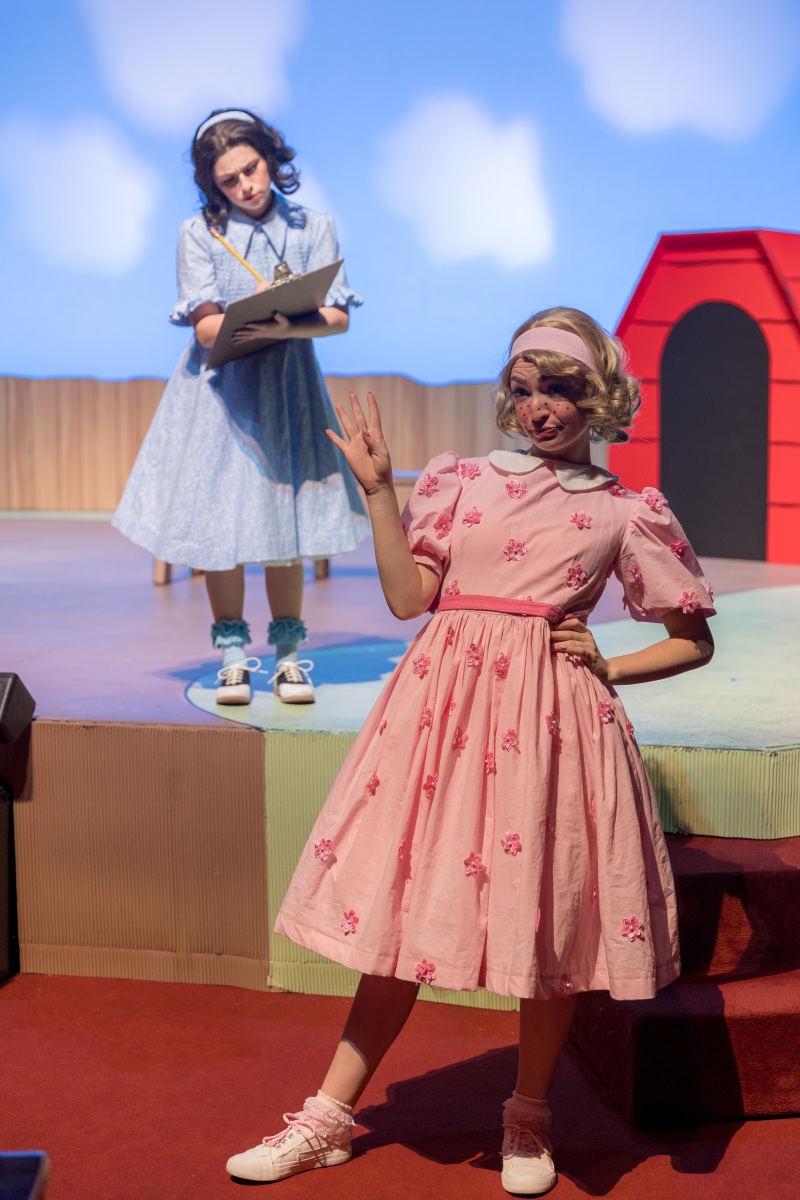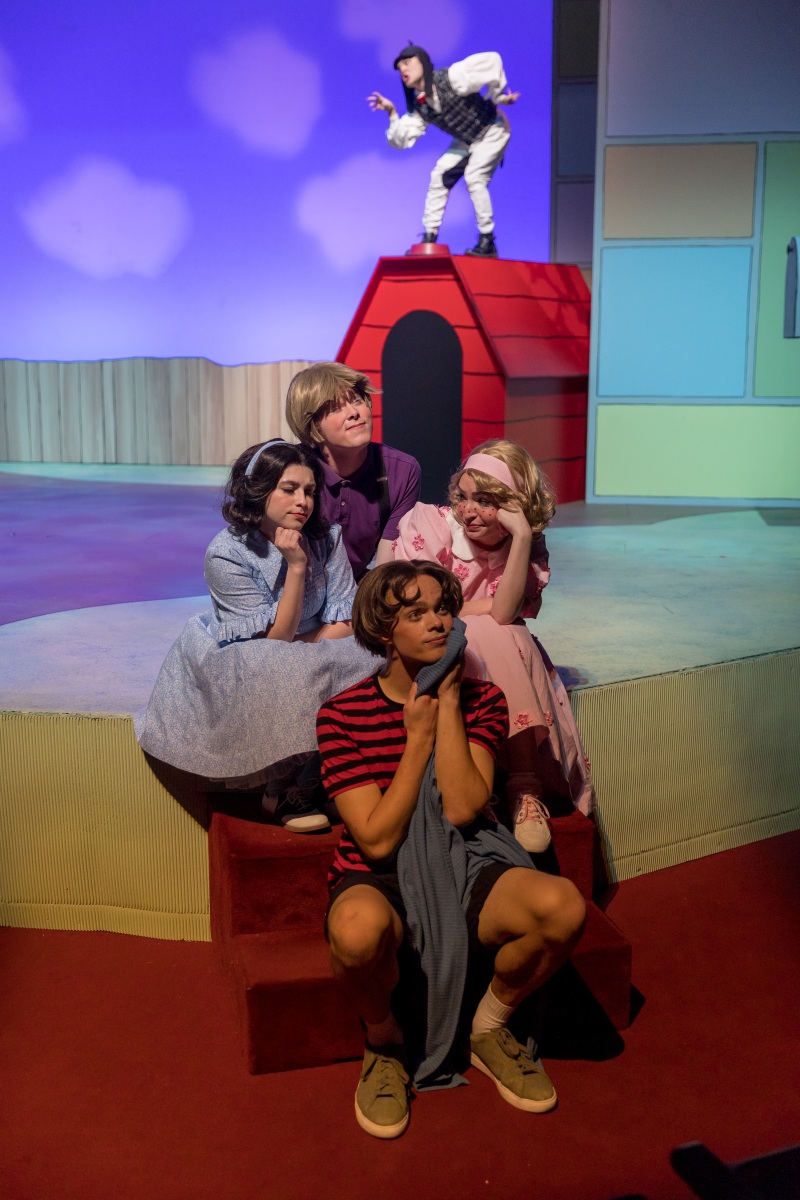| Artistic Staff | Cast |
| Director: Scott C. Knowles | Lucy: Ashley Aquino |
Assistant Director: Mary Jane Pike | Sally: Abbey Jolley |
Scenic Design: Riley Meyers | Snoopy: Zac Barnaby |
| Costume Design: Ariana Babbitt | Charlie Brown: Spencer Watson |
Lighting Design: Austyn Jane | Linus: Gideon Joseph Barfuss |
Dramaturg: Hannah Rose Luther | Schroeder: Spencer Barfuss |
Stage Manager: Alexander Kreiser | |
| Music Director: Lisa Quoresimo | |
Choreographer: Ashley Thormahlen |
Vision Statement
Peanuts can be broken up into a variety of categories, but I’m particularly interested in the way that they break up thematically or based on idea. One such categorization is the “battle of the sexes,” another might be “kids do the darndest things.” We also have more specific groupings like “kids playing sports,” “mud pies,” “the dog ate .. well everything.” The play, while certainly presenting any number of the tropes and categories from the Peanuts comics, focuses on what I find most important about the entire Peanuts universe: growing up. What does it mean to fall in love? What does it mean to find success? Or, more commonly in all of our lives, and certainly Charlie Brown’s, what does it mean to fail? How do we fail and in the immortal words of Samuel Beckett, “Try again. Fail again. Fail better.” All these lessons provided by each comic strip, each vignette in the play, connect us back to the idea of learning to be a person on this big blue marble—the pitfalls, the triumphs, the challenges, the joys, the devastating embarrassment alongside the true camaraderie and friendship. Each strip (or moment) teaches us something about being a part of US American culture and it does so through helping us all recognize our own humanity in each character: our flaws, our embarrassments, our lack of talents, or even just what a crabby person we are. All these lessons are geared towards one primary goal: acceptance in the pursuit of happiness. The play recommends accomplishing this goal in all the best ways, but perhaps most importantly, in community, friendship and a stark recognition that it is okay to fail, to be less than perfect, to be crabby, to lose the big game, to love things like old gross blankets, to be obsessive, to make bad art and argue it’s value (and it always has value!), to be weird, or even for your hero Beethoven to be commercialized. Each strip must be geared towards demonstrating and indeed promoting this message.
The play is organized like a comic strip and indeed it moves as such, from one seemingly disconnected scene, moment, bit to the next. For this to operate we need a versatile set that allows for quick transitions and a number of playing spaces (at least 3 areas to speed up transitions and increase the pace of the show). In all ways we should think about how we are framing a particular scene or moment with lights, architecture, color, and movement. Some strips interrupt and move through different strips–how will that work? This is a space of high theatricality and should be surprisingly playful. How many surprising ways can our Rabbit Chase at the end of Act 1 appear and disappear? How do we create a world from the perspective of young kids between the ages of 6-8? Peanuts has a set and very much expected style. Colors are bright pastels—see any of the sunday, full-color comic strips or movies to get a sense. Costumes are simple and follow the basic patterns as have been established over 50 years of Peanuts’ strips, movies, etc. Everything within this context should be exaggerated. The world should appear as though through the eyes of children. Costumes, set pieces, and props should all work toward the appearance of our actors as children in an adult world.
